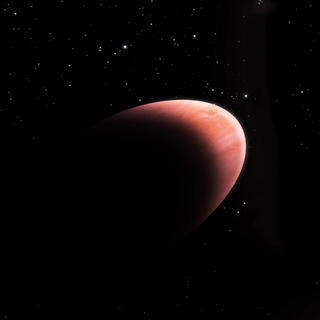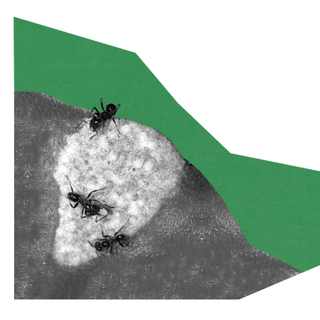
Saturn’s ‘Death Star’ Moon May Contain an Interior ‘Stealth’ Ocean
“[O]ur new understanding has greatly expanded the definition of a potentially habitable world in our Solar System and beyond.”

A moon — approximately the size of Switzerland — orbiting Saturn has attracted astronomers’ attention. It isn’t just for its striking resemblance to an evil space fascist basecamp that we know and love, but because of what lies beneath its surface. Dubbed ‘Mimas’, astronomers found that this moon exhibits a peculiar “wobble” — leading to speculation that it could be hiding an ocean underneath its icy crust.
If this is true, it will join moons like Europa in the interior water ocean worlds (IWOWs) category. Except, it’s different from any other IWOW previously observed, and changes our understanding of the habitability of stellar bodies.
For some context: an interior water ocean world is a planet or a moon with oceans beneath the surface — in contrast to the Earth, which has oceans on the surface. For oceans on surfaces to remain in liquid form, their planets would have to be close to the Sun. But IWOWs don’t have this requirement; gravitational pulls from nearby planets can generate tidal activity enough to generate heat and keep the oceans inside in liquid state inside. The discovery of IWOWs nearly 25 years ago was momentous — it put the habitability range of solar bodies much further than just the planets close to the Sun or any other star in other solar systems. In other words, more solar bodies have conditions that could possibly host life than we previously estimated.
Mimas, one of Saturn’s tiniest and most interior moons, wasn’t considered an IWOW until now. For one, Mimas has a heavily cratered surface. This would have led astronomers to believe it was a frozen block of ice, had it not been for its distinct “wobble” despite lower geological activity. In contrast — moons such as Enceladus and Europa are IWOWs which have oceans beneath their icy crusts, but with high geological activity due to the gravitational pull of the planets they orbit.
When scientists observed Mimas, they saw less geological activity despite experiencing a stronger pull from Saturn. Hence the initial assumption that it was a frozen, solid mass. A Saturn probe, Cassini, however, detected how Mimas moved unusually, putting this theory to the test.
Related on The Swaddle:
Methane Found on Saturn’s Moon Could Be a Sign of Life, Research Suggests
“If Mimas has an ocean, it represents a new class of small, ‘stealth’ ocean worlds with surfaces that do not betray the ocean’s existence,” said geophysicist Alyssa Rhoden of the Southwest Research Institute, lead author of the study, in a press release.
“IWOWs, such as Enceladus and Europa, tend to be fractured and show other signs of geologic activity. Turns out, Mimas’ surface was tricking us, and our new understanding has greatly expanded the definition of a potentially habitable world in our Solar System and beyond,” she added.
This led to a puzzling contradiction to solve. In other IWOWs, there is an explanation for how interior oceans can stay in liquid form and be encapsulated by a crust of ice — tidal movements that generate heat. In the case of Mimas — whose ice shell is much thicker than that of other IWOWs — how can the water inside remain liquid while the moon maintains a thick, icy, relatively geologically dormant shell?
In a paper published in Icarus, Rhoden and her team investigated the possibility using a theoretical method called “tidal heating analysis.” “An ocean within Mimas would be surprising, given the lack of comparable geologic activity to that observed on other ocean-bearing moons like Europa and Enceladus, and thus has important implications for the prevalence and identification of ocean worlds,” the paper stated. Their calculations supported the theory that Mimas is indeed an ocean world, and this changes previous assumptions about which heavenly bodies count as one.
It means that the scope of habitable conditions is expanded even further than when IWOWs were discovered. Even deceptively still bodies with a hard, cratered surface, could be teeming with life deep in its icy depths. Not all living organisms need sunlight to survive — a process called chemosynthesis sustains life sans sunlight near hydrothermal vents here on Earth, too.
Even a moon that looks as rigid and sturdy as The Death Star, therefore, could be hiding the ingredients of life, if not life itself. The real life Death Star is, in other words, the opposite of its reel counterpart in that it signals new hope for life, rather than the end of it.
“Each time scientists discover another IWOW, it brings up the possibility of life. For life to start, evidence shows that there needs to be an active interface between water and rock. Mimas’ density suggests it could have a rocky core. If there’s heat, then interactions between water and rock can supply the necessary ingredients for life,” Universe Today notes.
“Evaluating Mimas’ status as an ocean moon would benchmark models of its formation and evolution. This would help us better understand Saturn’s rings and mid-sized moons as well as the prevalence of potentially habitable ocean moons, particularly at Uranus. Mimas is a compelling target for continued investigation,” Rhoden said.
Rohitha Naraharisetty is a Senior Associate Editor at The Swaddle. She writes about the intersection of gender, caste, social movements, and pop culture. She can be found on Instagram at @rohitha_97 or on Twitter at @romimacaronii.
Related


Scientists Discover a ‘Deformed,’ Rugby Ball‑Shaped Exoplanet For the First Time
